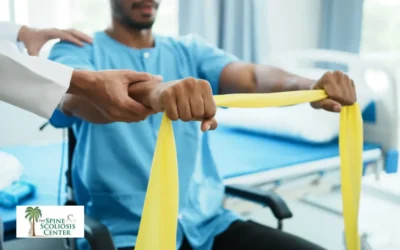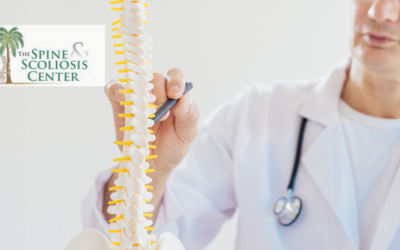Scoliosis is the most common spine deformity that affects adults and children alike. However, being diagnosed with scoliosis doesn’t mean you absolutely need back surgery; there is a range of non-surgical treatment options available, depending on the severity of your symptoms and the specific case in question. Always consult with a back specialist to determine the optimal treatment for your spinal condition. Read on to learn more about some things that you may not know about scoliosis to get a more comprehensive understanding of the condition.
Things You May Not Know About Scoliosis
Here are some things many people may not be aware of with scoliosis:
- Scoliosis isn’t a disease but an abnormality
Scoliosis is a condition where the spine forms an abnormal curvature rather than a straight line with slight curvatures. Scoliosis causes the spine to take more of an extreme S or C shape. While most patients are born with scoliosis, it can also be from adult-onset degenerative conditions like physical trauma. However, there isn’t an identifiable cause or underlying condition for most people with scoliosis. - Scoliosis typically starts in adolescence
More than 80% of idiopathic scoliosis (no clear cause) begins in adolescence, which may be due to physical growth and swift changes that are typical of adolescence. Early scoliosis is key to preventing the spine from going beyond a 40-degree curve.
- Mild degenerative scoliosis affects over half of people over 60.
Although scoliosis develops mostly during adolescence, older adults can be impacted. Adult scoliosis progresses gradually, and symptoms may come and go. - You can miss scoliosis easily
Scoliosis is diagnosed when the spine’s sideways curve (Cobb angle) is over 10 degrees. Unfortunately, a 10 to 20-degree curve isn’t extremely noticeable, so the condition may keep progressing until it is more advanced. - Early detection is key
Scoliosis is a permanent condition, but early detection can be instrumental in keeping it from worsening. If detected during adolescence, spine doctors can help to manage it through non-invasive ways like physical therapy and strengthening exercises. - Surgery isn’t the only option
Only a small percentage of scoliosis cases require surgery; if the curve is extreme or rapidly developing, your doctor may recommend surgery. However, non-invasive treatments like physical therapy are always preferential. - Scoliosis has no known cause
Contrary to popular opinion, scoliosis isn’t due to heavy backpacks, sports injuries, or bad posture. It is an idiopathic condition. - Quitting smoking helps
Scoliosis is much more likely to progress in smokers, and smoking is the leading preventable cause of back and neck problems.
- Scoliosis doesn’t impact conception
Scoliosis typically doesn’t cause any problems with conception, pregnancy, or birth. Most of the time, women with scoliosis don’t have any scoliosis-related issues with pregnancy, so a safe and comfortable delivery should be fine.
- You can play sports again after spinal surgery
The words “spine surgery” typically strikes fear into hearts with the assumption that it ends participation in any recreational sports. However, this doesn’t have to be the case. Following an appropriate period of recovery, you should be able to participate in sports (including contact sports), as long as you continue to check with your doctor regarding your general health before you participate in any other activities.
Contact Us Today
There are many misconceptions about scoliosis that are floating around out there. If you require care for your spinal condition, call the Spine and Scoliosis Center to schedule an appointment today!




0 Comments